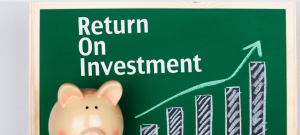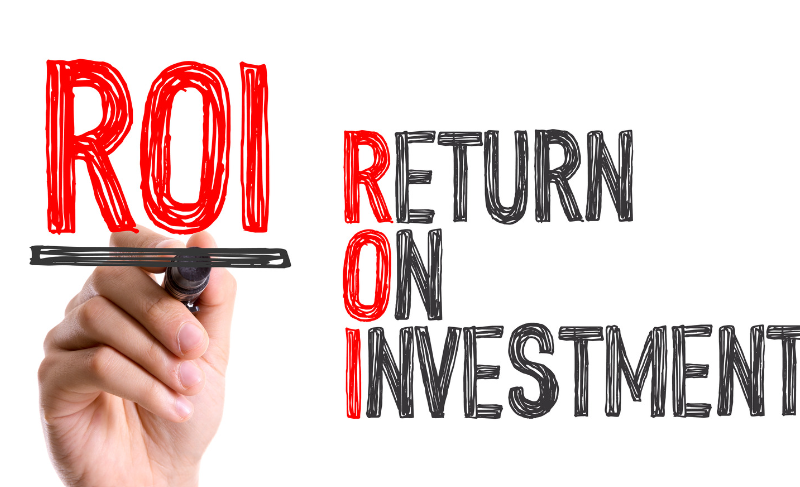ROI, or return on investment, is a critical metric for any business or investor. After all, who doesn’t want to get the most bang for their buck? But achieving a high ROI isn’t always easy. It requires careful planning, strategic decision-making, and a deep understanding of your market and goals.
In this blog post, we’ll explore some proven strategies and tactics that can help you maximize your ROI. Whether you’re investing in stocks, real estate, or your own business, these tips will give you the knowledge and tools you need to make smart financial decisions and achieve the best returns possible. So if you’re ready to take your investments to the next level, keep reading!
What is Return on Investment?

Return on Investment (ROI) is a financial metric used to evaluate the profitability of an investment in the UK. It measures the return or gain generated from an investment relative to its cost. ROI is typically expressed as a percentage and is calculated by dividing the net profit or gain from the investment by the initial cost of the investment and then multiplying by 100.
A higher ROI indicates a more profitable investment, while a lower ROI suggests that the investment may not be generating significant returns. ROI is an important tool for investors and businesses in assessing the potential profitability of various investment opportunities in the UK market.
Best Return on Investment – 6 Best Investments

There are a lot of different options when it comes to investing your money. But what pays the highest return on investment? We will break it down for you here.
1. Stocks

Stocks have the potential to offer the highest return on investment, but they also come with the greatest level of risk. For those who are willing to take on that risk, stocks could provide superior returns.
2. Mutual Funds

Mutual funds offer a more diversified portfolio and can be a good choice for those who don’t want to put all their eggs in one basket. They tend to be less volatile than stocks and thus may provide a steadier return over time. However, they typically have lower returns than stocks.
3. Exchange-Traded Funds (ETFs)

Exchange-traded funds (ETFs) are similar to mutual funds but are traded on an exchange like a stock. ETFs offer the benefits of diversification and often have low expense ratios. However, they can be subject to market volatility and may not perform as well as other investments in a down market.
4. Real Estate

Real estate can be a great investment for those willing to do the work. It can provide high returns through appreciation or rental income, but it is also a more illiquid asset than other investments on this list.
5. Cryptocurrencies

Cryptocurrencies have become popular in recent years due to their high potential returns. However, they are also incredibly volatile and risky, so investing in them should only be done with caution.
6. Venture Capital

Venture capital could offer the highest return on investment of any of these options but is also the most speculative and risky. This type of investing involves putting money into early-stage companies in the hopes that they will become successful and generate significant returns.
What is the Safest Highest on Investment?

When it comes to investing, high-quality premium bonds and fixed-indexed annuities are often considered to be some of the safest options. High-quality bonds, such as government bonds or highly-rated corporate bonds, are known for their low risk of default. These bonds offer a fixed interest rate and return of principal upon maturity, making them a reliable investment choice for those looking for stability.
Fixed-indexed annuities, on the other hand, provide a guaranteed minimum interest rate and potential for additional interest based on the performance of an underlying index. They offer protection against market downturns and provide a steady income stream during retirement. While there is still some level of risk involved with any investment, these options are generally considered safer than more volatile investments like stocks or real estate. It’s important to consider your financial goals and risk tolerance before making investment decisions.
What is Considered a Good Return on Investment?

A good return on investment is typically considered to be around 7% per year. This percentage is often used as a benchmark for evaluating the performance of investments and can vary depending on the type of investment and the level of risk involved. It is important to note that returns can fluctuate and are not guaranteed, so it is always advisable to do thorough research and seek professional advice before making any investment decisions. Additionally, individual financial goals and risk tolerance should also be taken into consideration when determining what constitutes a good return on investment.
Is 2% Return on Investment Good?
A 2% return on investment can be considered good, especially when there is no risk involved. In today’s low-interest rate environment, finding investments that offer a guaranteed return can be challenging. With a 2% return, you earn more than you would typically receive from a savings account or low-risk investment like government bonds.
While it may not be as high as the returns you could earn from riskier investments, such as stocks or real estate, the fact that you don’t have to accept any risk makes it a very attractive option for those who prioritize the preservation of their capital. Ultimately, the decision of whether a 2% return on investment is good for you will depend on your specific financial goals and circumstances.
Is 7% Return on Investment Good?
When evaluating the success of an investment, a return of around 7% per year is generally considered to be good. This return rate can help investors grow their wealth over time and outpace inflation. However, it is important to keep in mind that what may be considered a good return for one investor may not be sufficient for another, as risk tolerance and financial goals can vary. Additionally, it is always wise to diversify investments and consider factors such as fees, taxes, and market conditions when assessing the performance of an investment.
Is 10% Return on Investment Good?
When it comes to determining whether a 10% return on investment (ROI) is good, it largely depends on the context and individual circumstances. In some cases, a 10% ROI may be considered quite favourable, especially in comparison to low-risk investments such as savings accounts or government bonds, which typically offer lower returns. However, a 10% ROI may not be as impressive in other situations, particularly when compared to higher-risk investments or market averages. It’s important to consider factors such as the time frame of the investment, associated risks, and personal financial goals when evaluating the adequacy of a 10% ROI.
Is 20% Return on Investment Good?
A 20% return on investment can be considered quite good in many cases. It is important to note that the perceived “goodness” of a return on investment can vary depending on the context and the individual’s financial goals and risk tolerance. Generally, a 20% return is higher than one might expect from more conservative investments such as bonds or savings accounts. However, it is important to consider the investment’s associated risks and potential volatility. It is always advisable to consult with a financial advisor before making investment decisions to ensure they align with your financial circumstances and goals.
Conclusion
Investing is a key strategy for building wealth and securing your financial future. In this blog, we explored six of the best investments that offer excellent returns on investment. Each investment option has unique advantages and potential for growth, from stocks and real estate to bonds and mutual funds. By diversifying your portfolio and carefully considering your risk tolerance and financial goals, you can make informed investment decisions that align with your objectives. Remember, investing requires patience, research, and a long-term perspective. If you’re ready to take the next step in your investment journey, consider exploring these six best investments further to find the right fit for you.









